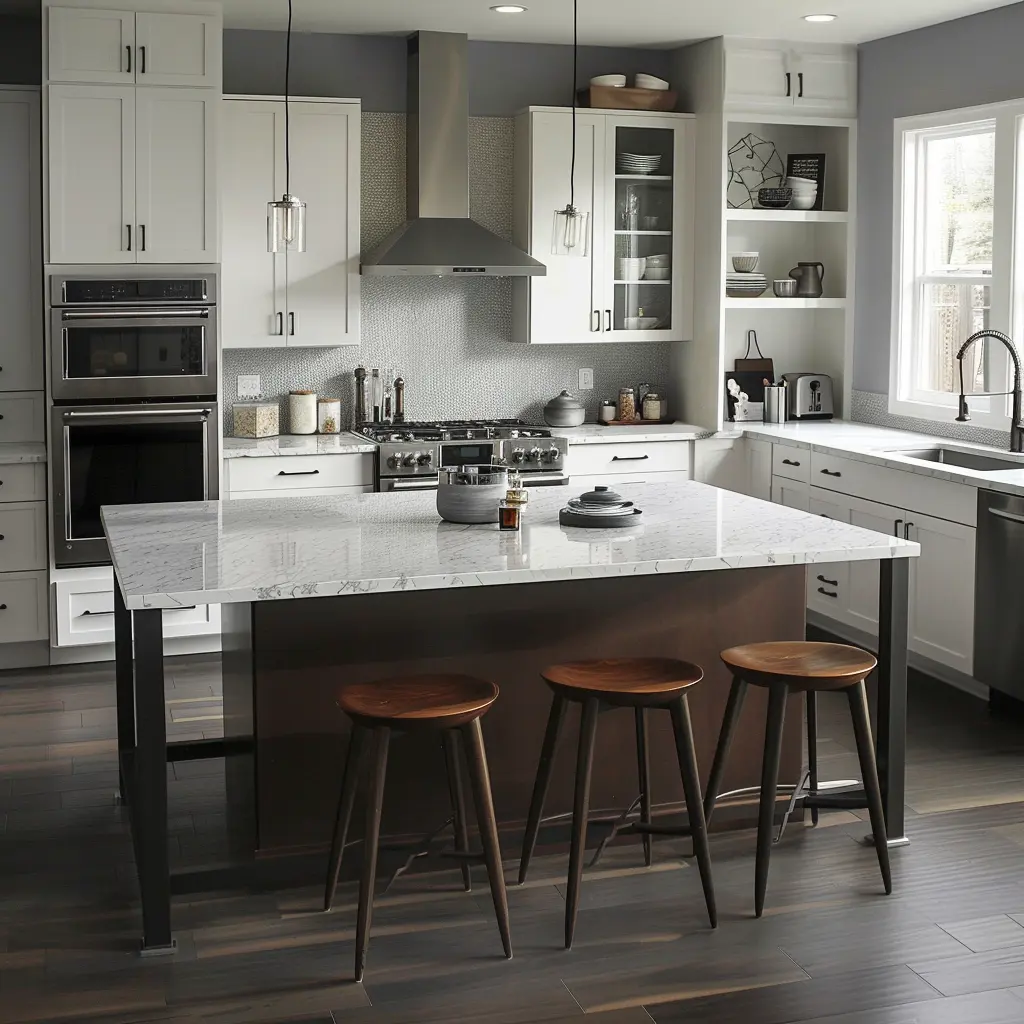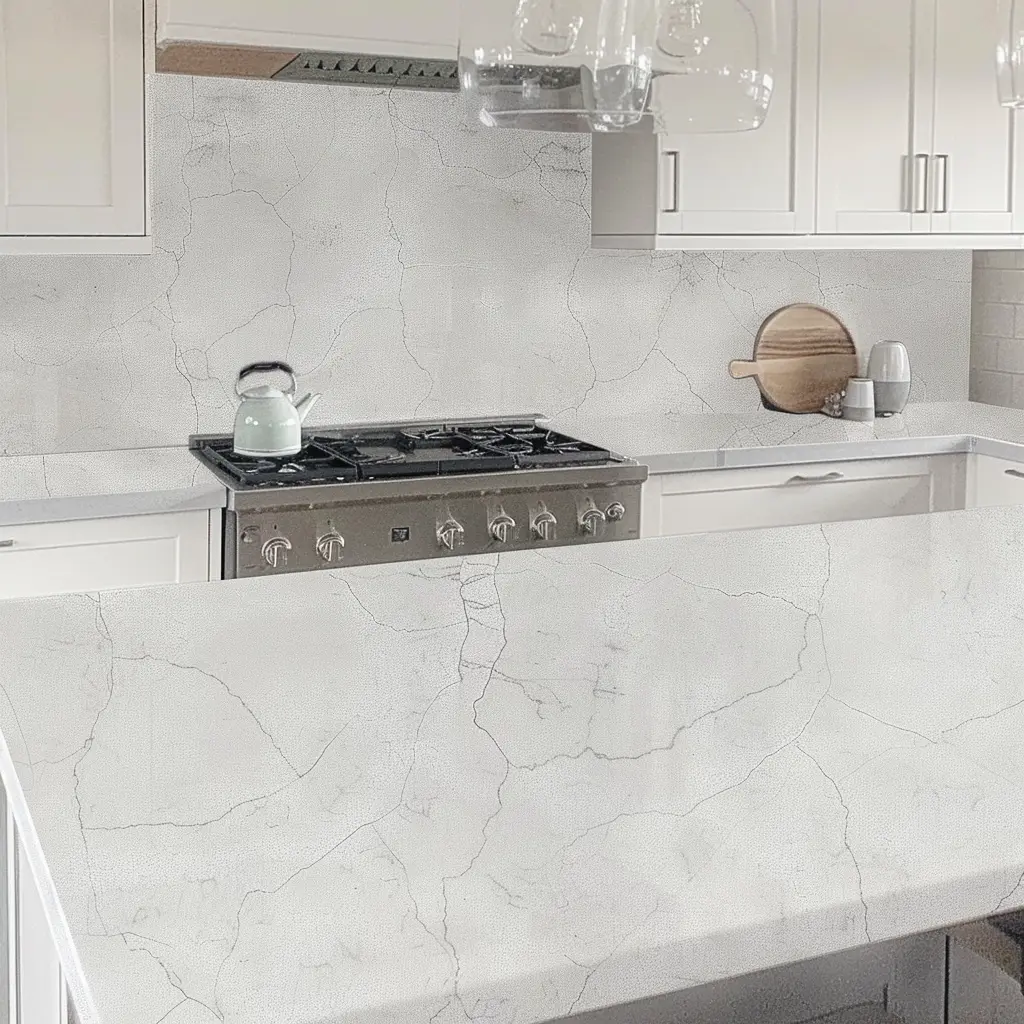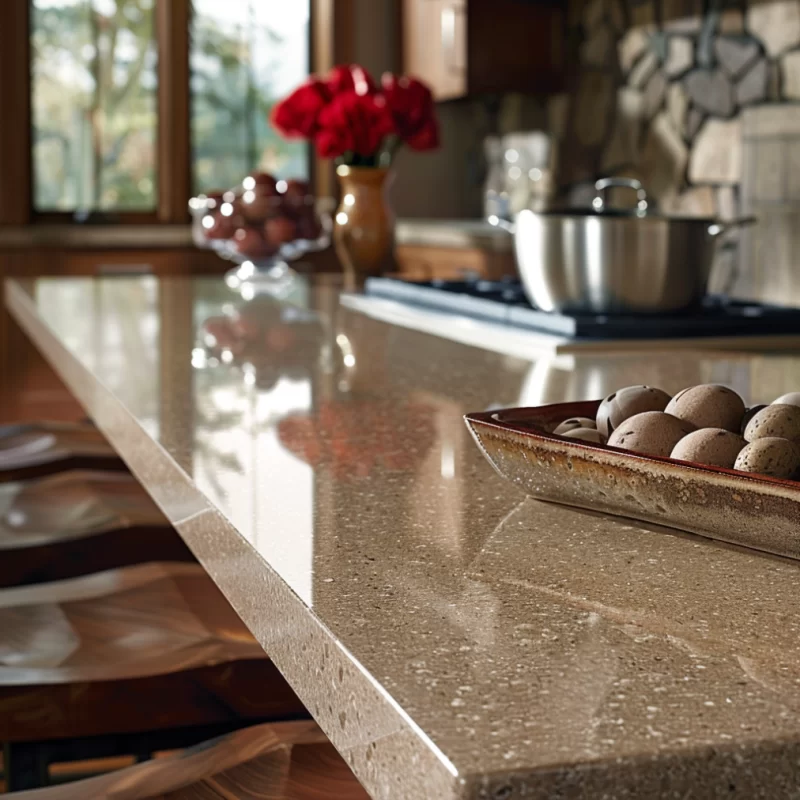Your kitchen is more than just a place to cook; it’s the heart of your home. Whether you’re preparing a family meal or entertaining guests, the kitchen is where memories are made. One of the most important elements of any kitchen design is the countertop. It’s not only a functional space but also a key contributor to the overall aesthetic of your kitchen. This is where Silestone quartz countertops come into play. Offering a perfect blend of style and durability, Silestone can transform your kitchen into a space that’s both beautiful and practical.

This may interest you Silestone Quartz Countertops: The Perfect Blend of Beauty and Durability
What is Silestone?
Brief History and Overview
Silestone, a product of Cosentino, has been a leading name in the quartz countertop industry since its introduction in the 1990s. Known for its innovation and quality, Silestone has become a top choice for homeowners looking to upgrade their kitchens with a material that offers both beauty and resilience.
Composition and Manufacturing Process
Silestone is engineered from natural quartz, one of the hardest minerals on earth. It is combined with resins and pigments to create a surface that is not only incredibly durable but also available in a wide array of colors and patterns. The result is a countertop that mimics the look of natural stone while providing superior performance.
Advantages of Silestone Quartz Countertops
Durability and Strength
One of the standout features of Silestone is its durability. Being made primarily from quartz, it is resistant to scratches, chips, and cracks, making it an ideal surface for the busiest kitchens. Unlike other materials, Silestone does not require sealing, further adding to its low-maintenance appeal.
Variety of Colors and Finishes
Silestone offers an impressive selection of colors, ranging from classic neutrals to vibrant hues. Whether you’re looking for a subtle, elegant finish or something bold and contemporary, there’s a Silestone option for you. The brand also offers various finishes, including polished, suede, and volcano, allowing you to customize the look and feel of your countertops.
Resistance to Stains and Scratches
Thanks to its non-porous surface, Silestone is highly resistant to stains from common kitchen substances like coffee, wine, and oils. This feature makes it easier to maintain a clean and hygienic kitchen environment. Additionally, its scratch-resistant properties ensure that your countertops remain looking new for years to come.
Low Maintenance Requirements
One of the most appealing aspects of Silestone countertops is their low maintenance. Unlike natural stone, which may require regular sealing and special cleaners, Silestone is easy to care for. Simple daily cleaning with mild soap and water is all that’s needed to keep your countertops looking pristine.
Environmental Considerations
Silestone is also a more sustainable choice for eco-conscious homeowners. The manufacturing process includes recycled materials, and the company’s commitment to sustainability is evident in their eco-friendly practices and certifications.
Silestone vs. Other Countertop Materials
Silestone vs. Granite
Granite has long been a popular choice for countertops, but Silestone offers several advantages. While both materials are durable, Silestone’s non-porous surface makes it more resistant to stains and bacteria. Additionally, Silestone offers more consistent color options, whereas granite’s natural variation can sometimes be unpredictable.
Silestone vs. Marble
Marble is known for its elegance and timeless appeal, but it’s also prone to staining and scratching. Silestone, on the other hand, provides a similar luxurious look without the high maintenance. It’s a more practical option for busy kitchens where durability is a priority.
Silestone vs. Laminate
While laminate countertops are budget-friendly, they don’t offer the same level of durability or aesthetic appeal as Silestone. Silestone’s longevity and resistance to wear and tear make it a better investment in the long run.
Design Options with Silestone Quartz Countertops
Popular Colors and Patterns
Silestone offers a vast array of colors and patterns to suit any kitchen style. From sleek, modern designs to classic, timeless looks, there’s something for everyone. Some of the most popular colors include Eternal Calacatta Gold, which mimics the look of marble, and Stellar Negro, a bold black with a shimmering finish.
Customization Possibilities
One of the biggest advantages of choosing Silestone is the ability to customize your countertops to fit your exact specifications. Whether you want a specific edge profile or need a custom size to fit an unusual space, Silestone can be tailored to meet your needs.
Matching with Kitchen Styles
No matter your kitchen’s design, Silestone can complement it beautifully. Whether you have a traditional, rustic kitchen or a sleek, modern space, there’s a Silestone design that will enhance your aesthetic.
Installation Process
Choosing the Right Installer
The quality of your countertop installation is just as important as the material itself. It’s crucial to choose a professional installer with experience in working with Silestone to ensure a flawless finish.
Steps Involved in Installation
The installation process typically involves several steps, including measuring your space, cutting the Silestone to size, and securely fitting it onto your cabinets. The process can take a few days, depending on the complexity of the design and the size of your kitchen.
What to Expect During Installation
During installation, you can expect some noise and disruption, but a professional installer will minimize this as much as possible. Once installed, your countertops will be ready to use immediately, with no need for sealing or special treatments.
Cost Considerations
Factors Affecting the Price
Several factors can affect the cost of Silestone countertops, including the color and finish you choose, the size of your kitchen, and the complexity of the installation. Customization options can also add to the overall cost.
Long-term Value and ROI
While Silestone may have a higher upfront cost compared to other materials, its durability and low maintenance make it a wise investment. Over time, the value and longevity of Silestone countertops can more than justify the initial expense.
Comparing Costs with Other Materials
When compared to other high-end countertop materials like granite or marble, Silestone is competitively priced. Its superior performance and lower maintenance costs can result in long-term savings.

Maintaining Silestone Countertops
Daily Cleaning Tips
Keeping your Silestone countertops clean is simple. Use a mild detergent and a soft cloth to wipe down the surface daily. Avoid using harsh chemicals or abrasive sponges that could damage the finish.
How to Handle Stains and Spills
In the event of a spill, it’s best to clean it up immediately to prevent staining. For tougher stains, a gentle, non-abrasive cleaner should do the trick. Because Silestone is non-porous, most spills won’t penetrate the surface, making it easier to maintain.
Preventing Damage
While Silestone is incredibly durable, it’s still important to take precautions to avoid potential damage. Use cutting boards to prevent scratches and trivets to protect the surface from hot pots and pans.
Common Myths and Misconceptions
Silestone is Too Expensive
While Silestone may have a higher initial cost, its durability and low maintenance make it a cost-effective choice over time. The investment pays off in longevity and ease of care.
It’s Not as Durable as Granite
Silestone is actually more durable in many ways, especially when it comes to stain resistance and maintenance. Its non-porous surface offers an advantage over granite, which can be more susceptible to staining and requires regular sealing.
Limited Design Options
Contrary to this myth, Silestone offers one of the most extensive selections of colors and patterns available on the market. Whether you want a classic look or something more contemporary, Silestone has options to suit your taste.
Customer Testimonials
Real-life Experiences
Many homeowners who have chosen Silestone for their kitchen countertops rave about the results. They appreciate the combination of beauty and practicality, often noting how the material has transformed their space.
Before and After Transformations
The difference Silestone can make in a kitchen is often dramatic. From outdated to modern, these countertops can completely change the look and feel of your kitchen, adding both style and value to your home.
Conclusion
Silestone quartz countertops offer the ultimate combination of style, durability, and practicality. Whether you’re renovating your kitchen or designing a new one, Silestone provides a wide range of options to suit any taste and lifestyle. From its low maintenance to its environmental benefits, Silestone is a smart investment that will enhance the beauty and functionality of your kitchen for years to come.

FAQs
1. What is the Best Way to Clean Silestone Countertops?
The best way to clean Silestone countertops is with a mild detergent and a soft cloth. Regular cleaning will keep them looking new.
2. Are Silestone Countertops Heat Resistant?
Yes, Silestone is heat resistant, but it’s still advisable to use trivets to avoid potential damage from extremely hot pots and pans.
3. Can Silestone be Used for Outdoor Kitchens?
While Silestone is primarily designed for indoor use, it can be used in outdoor kitchens with proper care and maintenance to protect it from the elements.
4. How Does Silestone Handle High Traffic Areas?
Silestone is an excellent choice for high-traffic areas due to its durability and resistance to scratches and stains.
5. Is Silestone Prone to Fading?
Silestone is resistant to fading, but prolonged exposure to direct sunlight may cause some colors to lighten slightly over time.

